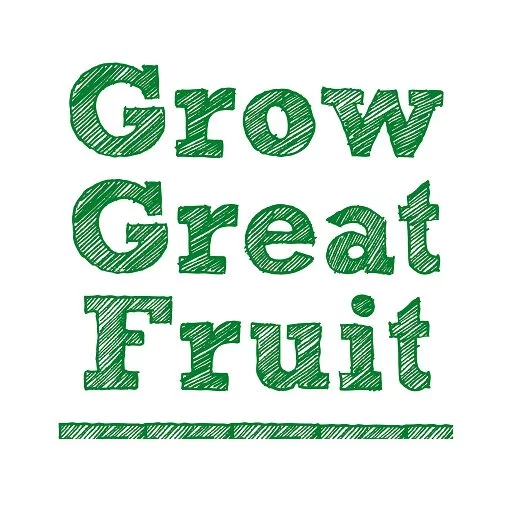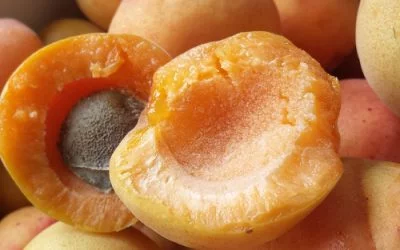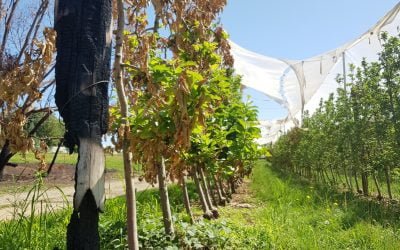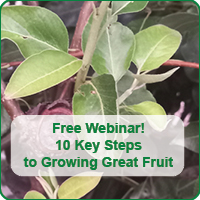Hail can cause plenty of damage to fruit and fruit trees. It’s (yet another) hazard that you need to try to anticipate, particularly hailstorms in spring and summer.
Related Articles
Fourteen varieties of apricot trees: pros and cons
Apricot trees are loved by many people. But what are the pros and cons, and how do you choose one variety over another?
Farmers talk about growing food
Backyard growers can learn a lot from listening to farmers talk about the highs and lows of growing food commercially.
The real impact of fire on fruit growing
Natural disasters like fire and flood can have devastating impacts on farmers and home-fruit growers alike. Here’s one farmer’s story.
We’ve had plenty of hailstorms at our place over the years, so we’ve experienced firsthand the damage it can do.
Hailstorms are different from rain events, in that they can be much more localised. At times our neighbours have experienced hail and we’ve missed out completely. Or one of the orchards on the farm will get hail but not the others.
If you weren’t home when the hail hit you might not even know it happened. You end up with mysterious damage on your fruit and are not sure what’s caused it. Insects are often blamed.
So, here’s what hail damage looks like on tiny plums.
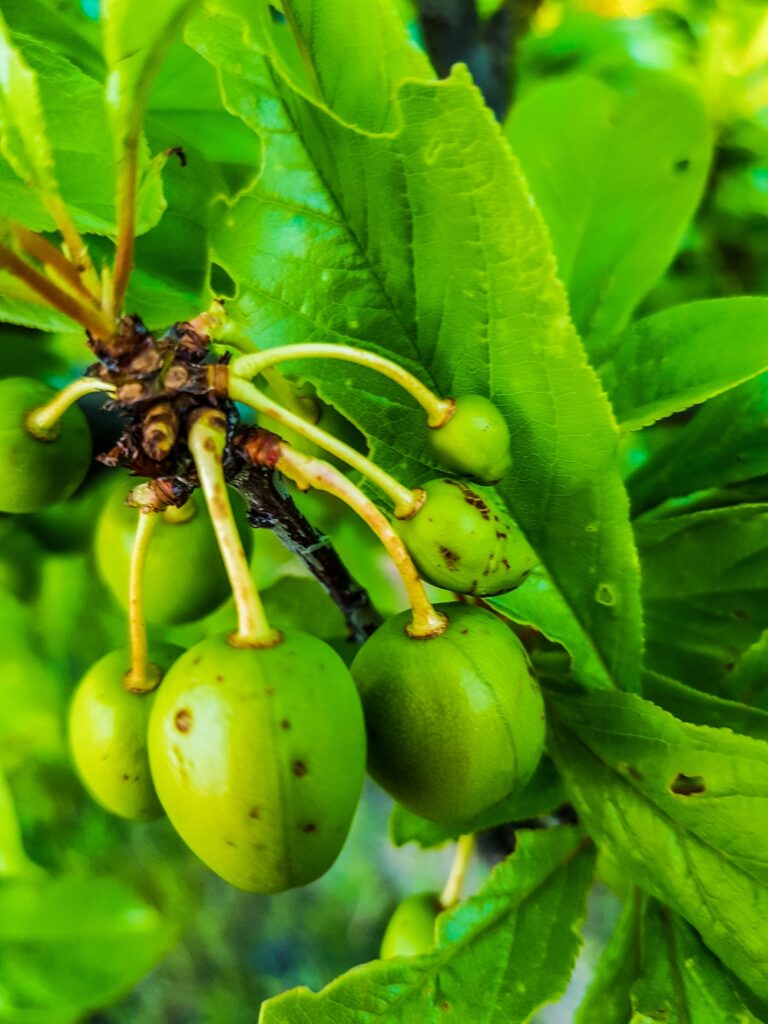
What damage can hail cause to your fruit trees?
Hail is a fruit growers’ nightmare.
It can cause untold damage to fruit in a short space of time. It’s been responsible for the ‘wipe-out’ of whole crops many times before.
One of the worst we’ve seen is our Grow Great Fruit member Lena (that’s her garden at the top of this blog). We got a message from her on the Members Forum headed “Severe weather damage to my orchard. Please help”.
As you can see, Lena’s orchard was in the path of a massive hailstorm and her fruit crop was severely damaged. Our hearts absolutely went out to her at that moment, because it brought back a lot of bad memories for us.
Hailstorms can be variable
And here’s what our neighbour’s place looked like after a hailstorm a few years ago.

Hailstones can vary massively in size and volume. We’ve all heard media reports of ‘hailstones as big as golf balls’, and seen damage to cars and windscreens.
More commonly though, they’re smaller and a hailstorm is often very brief, just a few minutes long.
But even small hail stones (like the ones in the photo on the mat outside our kitchen door) below can do damage. If you think about it, it’s like little rocks being hurled out of the sky onto our fruit.
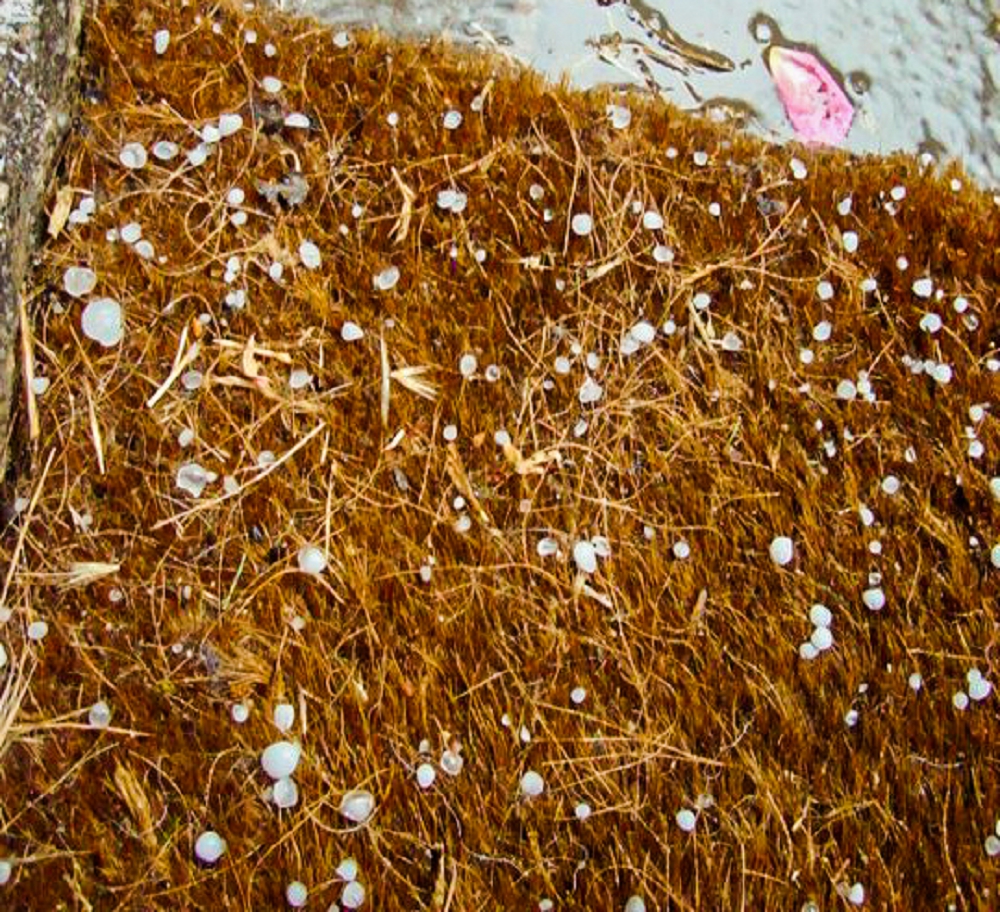
No wonder we take it seriously, right?
Here’s a selection of some hail-damaged apples at maturity, to give you an idea of how bad it can be…
Here’s what some apples looked like just after a hail storm. You can see the little marks on them, that grow into bigger deformities as the apple grows.
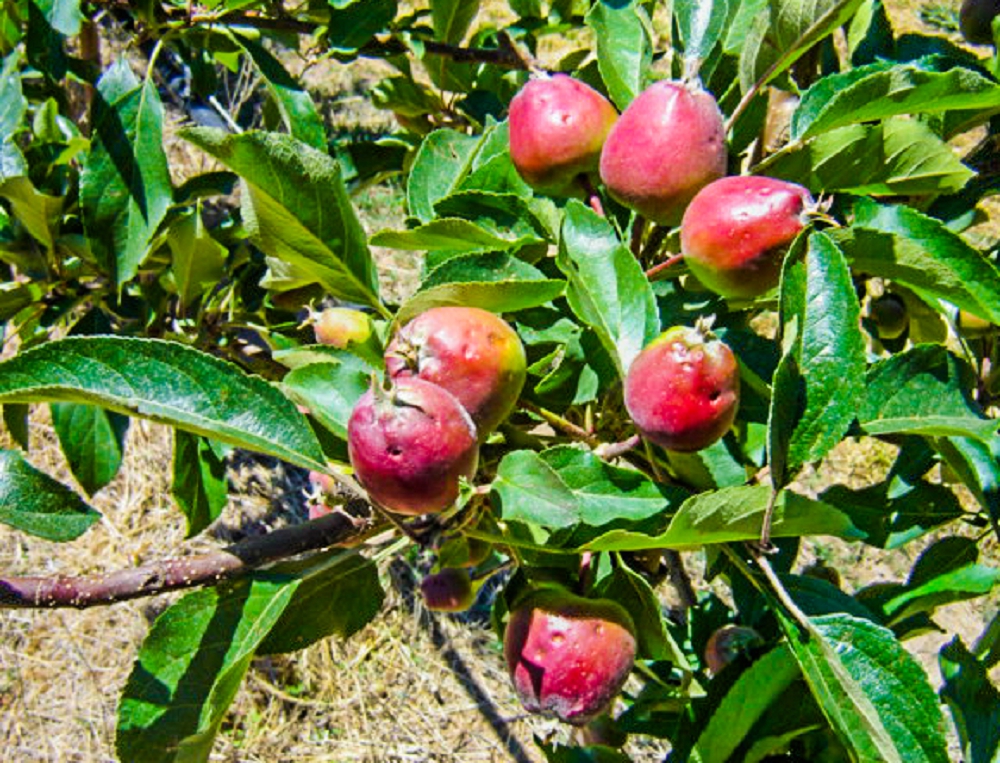
Hmm, not very attractive. And it’s only going to get worse as the fruit grows. The scars don’t grow with the rest of the tissue, so the fruit can become severely deformed by the time it’s fully grown.
But there’s no sense complaining, or worrying, is there? It’s one of those things we have no control over. Or…do we?
Managing the risk of hailstorms
Like any natural hazard that can damage your fruit, it pays to have a risk management strategy in place. We might not have any control over the weather, but we’ve got plenty of control over how we plan before the bad stuff happens, and how we respond after the bad stuff happens.
For us, risk management is all about diversity. The more diverse your garden is, in every possible way, the more you can spread and manage the risk.
So, for example, we grow 7 main types of fruit (cherries, apricots, peaches, nectarines, plums, apples, and pears), plus lots of bits and pieces. All up we grow more than 100 varieties of fruit, and we add more varieties every year.
You may not have space for 100 varieties in your garden, but we recommend that you pursue the same strategy of diversity, because it can really help protect your crop.
In all our years of growing, through every dire weather event we’ve experienced — drought, hail, flood, bird plagues, heat waves, incessant rain, storms, grasshopper plagues (we could go on…) we have NEVER been completely wiped out.
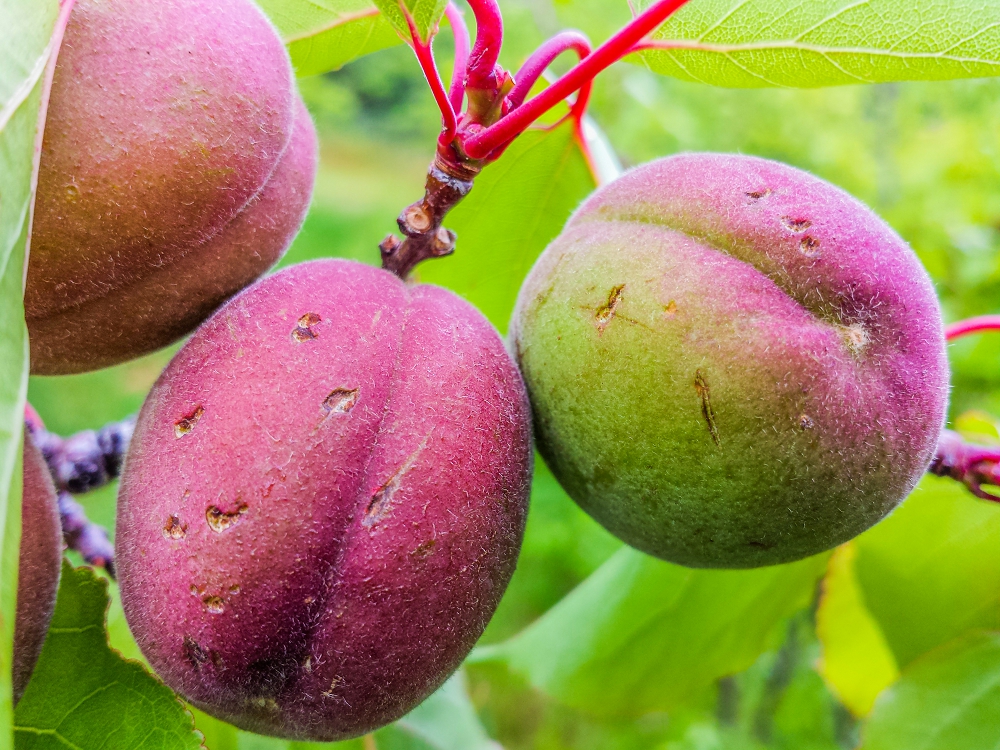
Practical strategies to protect against hail
How does diversity in the garden help to protect you?
Don’t worry, we’ve had plenty of crop losses along the way. Some years we’ve lost all the apricots or all the plums. Some years most of the apples and a few pears didn’t make it. Other years it’s been the peaches.
But never everything all at once.
If you grow many different types of fruit, they will all be at different stages of development in spring. Therefore, they will be affected differently by any given weather event (except something catastrophic, like fire).
For example, if we get a hail storm after the apricots have already been thinned, they’ll be particularly vulnerable. They’ll already be quite large and will also be exposed because the leaf cover develops after the fruit.
At the same time however, the apples are still flowering. That means they’re relatively protected because there’s no fruit to be damaged. The pears are tiny at that time of year, which means they’re hard to hit with a hail stone. Both apples and pears grow leaves before the fruit, so they also get some protection from the leaves.
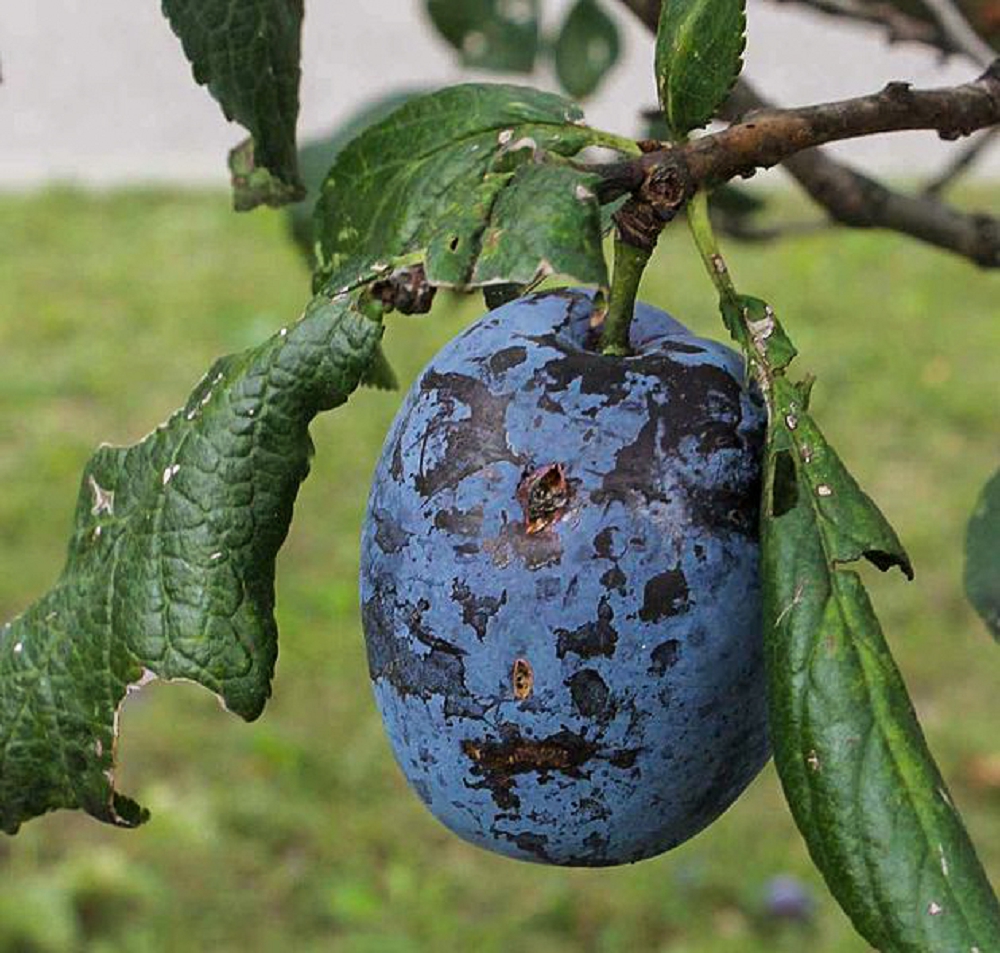
Other techniques that can help protect your fruit from hail
Hand thinning
Thinning is the process of removing some fruit by hand as we describe in this blog. It’s a great tool to manage hail damaged fruit. You’ll be removing some fruit anyway, so it’s a good opportunity to remove the most damaged ones. This can make a huge difference to the overall quality of your crop.
Netting
Netting is one of the best pest prevention techniques, and we highly recommend that you consider netting all your fruit trees. It’s possible to get specialist hail netting, but any type of netting (e.g. bird, frost, or fruit fly nets) over your tree will definitely help to protect your fruit tree from hail damage. The trick is having the net over your tree at the right time!
Microclimate
Planting the same type of tree in different parts of your garden can also help. Hail storms can be incredibly localised, so if you have more than one of the same type of tree, consider planting them in different places in your garden.
We’ve learned the hard way that we can’t control the weather. But in the end, we’re grateful, because it has meant we’ve had to get real about managing our risk.
These days we feel a bit more secure, knowing we’re doing everything we can to help all our fruit growing family to prepare for hail as much as possible. (But we’d still rather you don’t have to experience a hail storm, so we’ve got our fingers crossed for you.)
Related Articles
Fourteen varieties of apricot trees: pros and cons
Apricot trees are loved by many people. But what are the pros and cons, and how do you choose one variety over another?
Farmers talk about growing food
Backyard growers can learn a lot from listening to farmers talk about the highs and lows of growing food commercially.
The real impact of fire on fruit growing
Natural disasters like fire and flood can have devastating impacts on farmers and home-fruit growers alike. Here’s one farmer’s story.
